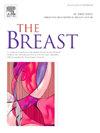Development and validation of a next-generation sequencing-based method for calculating the breast cancer polygenic risk score PRS313
IF 7.9
2区 医学
Q1 OBSTETRICS & GYNECOLOGY
引用次数: 0
Abstract
Polygenic risk scores (PRS) are genetic tools that quantify an individual's predisposition to certain diseases by combining the effects of many genetic variants. The PRS313 includes 313 genomic variants and has been incorporated into the BOADICEA prediction model and in the CanRisk software to refine breast cancer risk. However, its current implementation relies on SNP microarrays, limiting its use in sequencing-based clinical workflows.
In this study, we directly compared SNP microarray technology and targeted NGS sequencing to determine the PRS313. The two methods were tested for 154 patients. To replace PRS313 SNPs with low sequencing coverage and/or in regions of low complexity, 27 proxy SNPs in high linkage disequilibrium were integrated into the panel. After this optimization, the NGS-derived PRS313 demonstrated strong concordance with the microarray reference (R2 = 0.95), with sensitivity and specificity reaching 96 % and 97 %, respectively. Moreover, the clinical risk category, as defined by CanRisk, remained consistent in 97 % of cases across both methods.
These findings validate the use of targeted NGS for PRS313 calculation, demonstrating its feasibility, accuracy, and potential for easy integration into routine oncogenetic workflows. By enabling PRS calculation from the same sequencing data used for gene panel testing, this approach eliminates the need for separate genotyping platforms, offering a cost-effective and clinically practical solution to support the broader implementation of personalized breast cancer risk prediction.
新一代基于测序的乳腺癌多基因风险评分方法PRS313的开发和验证
多基因风险评分(PRS)是一种遗传工具,通过结合许多遗传变异的影响,量化个体对某些疾病的易感性。PRS313包括313个基因组变体,已被纳入BOADICEA预测模型和CanRisk软件,以改善乳腺癌风险。然而,其目前的实施依赖于SNP微阵列,限制了其在基于测序的临床工作流程中的使用。在本研究中,我们直接比较了SNP微阵列技术和靶向NGS测序来确定PRS313。这两种方法在154例患者中进行了测试。为了取代低测序覆盖率和/或低复杂性区域的PRS313 snp,将27个高连锁不平衡的代理snp整合到面板中。优化后,ngs衍生的PRS313与芯片参考基因具有较强的一致性(R2 = 0.95),灵敏度和特异性分别达到96%和97%。此外,CanRisk定义的临床风险类别在两种方法中97%的病例保持一致。这些发现验证了靶向NGS在PRS313计算中的应用,证明了其可行性、准确性,以及易于整合到常规肿瘤发生工作流程中的潜力。通过从用于基因面板测试的相同测序数据中计算PRS,该方法消除了对单独的基因分型平台的需求,为支持个性化乳腺癌风险预测的更广泛实施提供了一种具有成本效益和临床实用性的解决方案。
本文章由计算机程序翻译,如有差异,请以英文原文为准。
求助全文
约1分钟内获得全文
求助全文
来源期刊

Breast
医学-妇产科学
CiteScore
8.70
自引率
2.60%
发文量
165
审稿时长
59 days
期刊介绍:
The Breast is an international, multidisciplinary journal for researchers and clinicians, which focuses on translational and clinical research for the advancement of breast cancer prevention, diagnosis and treatment of all stages.
 求助内容:
求助内容: 应助结果提醒方式:
应助结果提醒方式:


